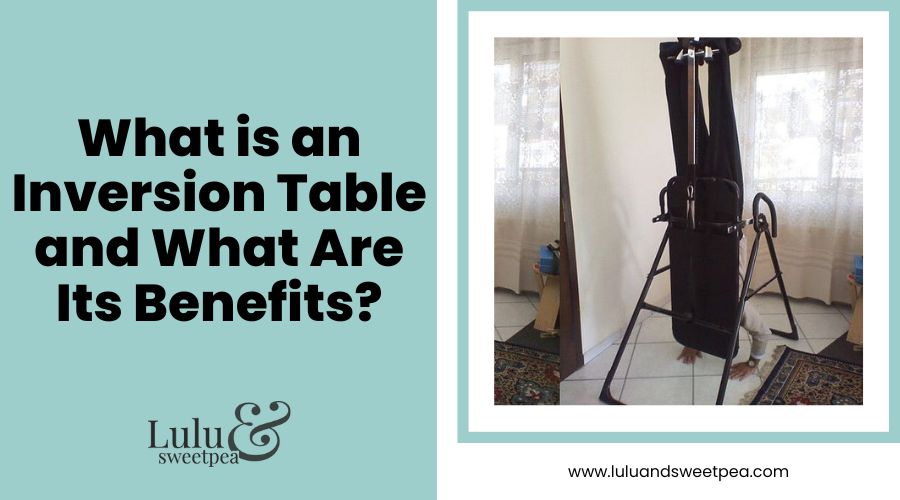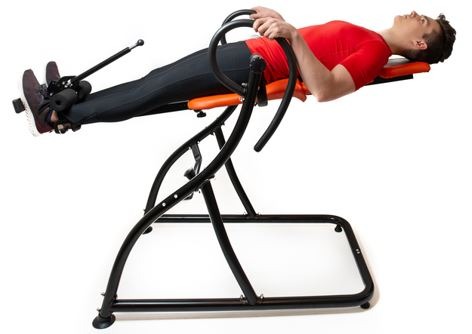Do you remember hanging upside down on the playground as a kid, feeling all stretched out while looking at the world from a different perspective? Back then, it was just for fun. But now that you are an adult, it can be therapeutic and beneficial, especially if you always encounter back pain.
With the help of an inversion table, you can get relief from back pain, sciatica, or even kidney stones (when done safely and under the guidance of a doctor, of course). But is it true that you will be relieved of your ailments by just tipping yourself upside down? Learn more about the inversion table and its benefits in this article.
What is Inversion Therapy?
Also called spinal traction, inversion therapy is a technique where a person is suspended upside down to stretch the spine and help relieve back pain. The theory behind inversion therapy is that being upside down eases the pressure of gravity on the nerves and the disks in your spine. By shifting the body’s gravity, the pressure eases off the back while also providing traction to the spine. Temporarily, there comes more space between the vertebrae that are usually smushed together.
It is called spinal traction because the device applies traction to the spine using a person’s weight and gravity, which stretches the spine.
For these reasons, inversion therapy may be helpful for people with the following:
- Chronic back pain
- Muscle spasms or muscle tension
- Compressed spinal disks
- Sciatica pain
- Scoliosis
- Poor circulation
- Kidney stones
Some people use inversion therapy as a general way to stretch the muscles and joints gently or relax.
Using tables is not the only way to do inversion therapy – you can also hang upside down with your feet strapped into gravity boots attached to a bar in a doorway. You can also use fabric yoga slings to help you hang upended and then return gently to an upright position. You can also opt for yoga poses that flip you over.
What are Inversion Tables?
Inversion tables are cushioned tables that allow you to strap yourself in and either tilt yourself backward, at an angle, or in a completely upside-down position to relieve pain associated with various spinal issues. It offers a non-invasive, passive mechanical traction designed to decompress the spine and reduce stress on body structures.
Inversion tables let users hang at an angle from their feet or upside down to allow the spine and back to elongate, which relieves the pressure on the discs and back by opening spaces up. Many inversion tables allow a person to assume an inverted position at different angles. The user lies on the table with their ankles supported by a bracket with a ratchet mechanism. Many devices allow total inversion, but most people choose to stay within 60 degrees. For safety, inversion tables come with a locking mechanism or strap to hold the table at a specific angle.
Some people use the product with gravity boots when performing inverted squats, sit-ups, and crunches, and pressure is taken off the back while the workout is intensified.
Benefits of an Inversion Table
If you’re thinking of using an inversion table, here are the benefits you may get from using it:
Reduces back pain
Do you have chronic back pain? Inversion therapy has been shown to reduce lower back pain by relieving the pressure on the sciatic nerve. Sciatica is a condition that results when the sciatic nerve becomes irritated somewhere along its path. If the cause of pain is vertebral disks being herniated or if there is a nerve impingement in those lower areas, then inversion therapy can help by letting the disks decompress and relieve irritation of the sciatic nerve.
A study looked at 47 people with lower back pain and made them undergo inversion therapy. It found that inversion therapy at 60 degrees reduced back pain after eight weeks and improved the torso’s strength and flexibility.
Relaxes tense muscles
In inversion therapy, muscles are gently stretched as circulation increases, helping to reduce tension. This theory is proven and tested by a study that found that the EMG activity (a measure of muscle tension) declined over 35% within 10 seconds of inversion. Amazingly, the effect was found to start at a shallow angle of 25 degrees.
This means that inversion therapy – even when you’re not totally inverted – can help stretch the muscles and allow the circulation to enter the sore muscles to bring oxygen-rich blood to the muscles. It also stimulates the lymph system to remove toxin buildup in the muscles, reducing muscle pain and stiffness.
May improve spinal health
Theoretically, inversion therapy can improve the space between the spinal discs and relieve pressure. Movements and activities like running, sitting, and bending can put pressure on these disks, increasing the risk of back pain, collapsed vertebra, ad other conditions. Many of our daily activities can cause misalignment or possible postural changes. Inversion therapy aims to help with that. With gentle pressure and pressure of the vertebra, it has the opportunity to move back to alignment.
However, according to a well-designed study, inversion therapy may be ineffective. But some people report that this form of stretching can help treat back pain and complement other treatments.
Increases flexibility
Inversion therapy may also help increase flexibility. Tight muscles and stiff joints can cause imbalances, resulting in improper body mechanics and an increased likelihood of injury. Using an inversion table can help elongate the muscles and decompress joints, enhance muscle efficiency, and improve mobility.
Compression of the spine can cause back pain and inflexibility, which happens naturally as we do our daily activities. When you are lying down, the compression in the spine is reduced to allow the discs to reabsorb moisture and nutrition over the hours you sleep slowly. According to a study, the traction force required to overcome compression was about 60% of your body weight. Inversion to an angle of 60 degrees is the practical way to offset that gravity force while remaining relaxed.
Inversion has been shown to increase intervertebral separation since it can help reduce the pressure on the discs to help them rehydrate, restoring flexibility and shock absorption.
Lessens the risk of surgery
A study suggests that the zero-gravity nature of inversion can help reduce compression, which may potentially prevent disability from back problems. This is also the same reason why inversion therapy may help prevent the need for getting spinal surgery. Another study found that inversion therapy can help people with the lumbar disease reduce their need for surgery.
However, it’s important to note that back problems are complicated, and inversion therapy won’t guarantee that you won’t need surgery, nor should it be an alternative treatment for back pain.
Reduces nerve pressure
If you have a pinched nerve, inversion therapy might help. When the spinal discs are damaged, dehydrated, and compressed, it causes pinched nerves that bring pain that radiates to the extremities. Through inversion, you can increase hydration to your discs, and it plumps in height, increasing the separation between the vertebra and reducing the pressure on nerve roots.
Improves joint health
Decompressing your spine and joints can help alter the pressure and suction forces within the joints, nourishing the cartilage and improving shock absorption. Inversion therapy with an inversion table can help maintain the health of your spine to protect it against injury.
Improves fitness
Some people use inversion tables for fitness, not medical treatment or maintenance. Attempting to do abdominal exercises like crunches and sit-ups on the table increases the difficulty, forcing your core muscles to work harder. Inverted squats can provide a unique leg workout, strengthening the hamstrings and quads while sculpting the glutes.
Eases stress
Stress and tension can cause muscle spasms and pain in the back, neck, and shoulders. Sometimes, muscle tension can be caused by the misalignment of the spine, overstimulation of the nerves, or poor circulation. Muscle tension produces pain through the accumulation of waste chemicals, and when this happens, the muscles go into spasms, which can also cause psychological stress. Going upside down can help relieve this tension.
For centuries yoga practitioners have tried yoga asanas wherein they go upside down using handstands and headstands for stress relief. A headstand position is a form of postural exchange. `Only some people can do it, so inversion using a table creates an easier alternative.
Prevents migraines
Some doctors suggest the use of back inverters to prevent migraine. How does it help? Well, migraines can be caused by oxygen depletion in the blood in the brain, and inversion therapy can help bring more blood flow (and, thus, more oxygen) to the brain. However, it’s recommended as a preventative treatment rather than a means of treatment during a migraine attack.
Potential Risks
While it is generally safe to do inversion therapy, there are risks associated with its use, especially in people with these medical conditions:
- Bone and joint disorders (osteoporosis, fractures, herniated disk, spinal injuries, ACL injuries)
- Cardiovascular diseases (high blood pressure, heart disease, stroke
- Eye diseases and conditions (glaucoma, detached retina, conjunctivitis, cerebral sclerosis)
- Ear infections
- Pregnancy
If you are using blood clotting medications or are obese, using an inversion table may cause complications.
The bottom line is to check with your doctor to see if inversion therapy would be safe and beneficial for you before trying to use an inversion table.

